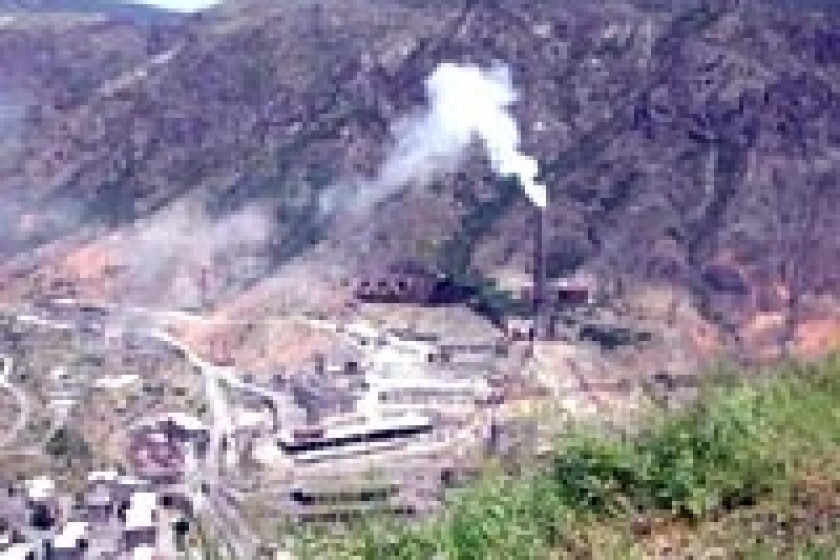
Unprecedented rise in miscarriages in Alaverdi
Karine Simonyan
From 1998 to 2003 the number of tuberculosis cases went up by 124. Mostly young people-from 18 to 35-- are falling ill. Martuhi Melikyan, department chief at the Alaverdi polyclinic, says it’s hard to identify concrete patterns, but she is sure that TB is on the rise, especially over the last five years. She has seen an increase in cases of family tuberculosis as well. In the Engels district of Alaverdi, there was one case in which three members of the same family died of TB within a year. The average life expectancy in Alaverdi is 65. The main causes of death are cardiovascular disease-strokes and heart attacks.
Svetlana Karyan, the director of the Alaverdi polyclinic, says that the rise in illness is conditioned, first of all, by social circumstances - people don’t go to the doctor in time, or if they do, either the hospitals do not have the drugs or equipment to treat them, or the cost of treatment is prohibitive. For example, people with lung disease are offered X-rays for 5,000 drams (about $9) - the amount of a monthly pension.
Health workers don’t rule out that the Alaverdi Copper Plant (ACP) also contributes to the worsening health in the region. “It’s true, the number of tuberculosis patients has grown since the plant was reopened, but I can’t link it directly to the plant’s activity. Of course, another thing is that TB patients need fresh air for their treatment to be more effective,” Martuhi Melikyan says.
Haykaz Amiraghyan, of the State Hygiene and Disease Prevention Service, doesn’t draw clear-cut conclusions either, but believes, “Polluted air will not cause specific diseases, but it can cause a gradual expansion of acute poisoning and disease.” Suliko Lalayan, an infection specialist, says that during the Soviet era there were many cases of contamination caused by polluted air, but doctors were instructed never to publish this information. This problem came out for the first time during the ecological movement of 1988-1989, when upkeep at the factory had been neglected and cases of mass contamination were obvious.
Susanna Mikoyan, at doctor at the Alaverdi plant for ten years until 1986, says that as early as 1982 or 1983 the use of sulphuric acid was responsible for frequent cases of acute contamination in and around the plant. Lida Harutiunyan, a district physician at the Alaverdi polyclinic, believes that pollution affects local productivity, as people become vulnerable to different viruses. But she doesn’t directly link the rise in ill health to the copper plant, either. Harutiunyan treats people in the center of town, close to the factory. Out of a population of 1,720, she has 42 patients with neuropathic disorders and 10 with tuberculosis. Doctor Rita Galstyan is responsible for the same number of people in an outlying district, where she has 35 neuropathic and 12 tuberculosis patients. These are the official numbers from the polyclinic. But with the help of people who live near the plant, we tried to count the real number of people with TB. Of 70 residents, nine had tuberculosis. The doctors did not dispute this number, explaining that often people don’t come to see them.
At the Alaverdi maternity home, doctors don’t rule out a connection between air pollution and the declining birth rate. The percentage of premature births was 4.3% in 1988, 4.9% in 1992, 6% in 1998, 5.1% in 2000 and 4.4% in 2002.
The rate of miscarriages was 9.4% in 1990, 2.4% in 1992, 3.2% in 1994, 8% in 1996, and 6.7% in 1998. In 2000 and 2002, the number of miscarriages was far higher than at any time in fifteen years-- 12.5% and 12.9% respectively. The highest rate of infant mortality was in 2002 - 1.8%.
Between 1992 and 1998, there were no cases of birth defects, and between 1986 and 1990 the number was less than 0.4%. But the rate of birth defects was up to 0.7% in 2000, and 1.2% in 2002.
The number of normal births continues to decrease. 1,451 children were born in Alaverdi in 1986, 1,230 in 1992, 768 in 1998, and 498 in 2002.
Rosa Machkalyan, a doctor at the maternity home, believes that pollution from the copper plant may play a role. But officials at ACP disagree. They point to their low output, and continue to use dangerously outdated methods to produce copper.
 Videos
Videos Photos
Photos




Write a comment